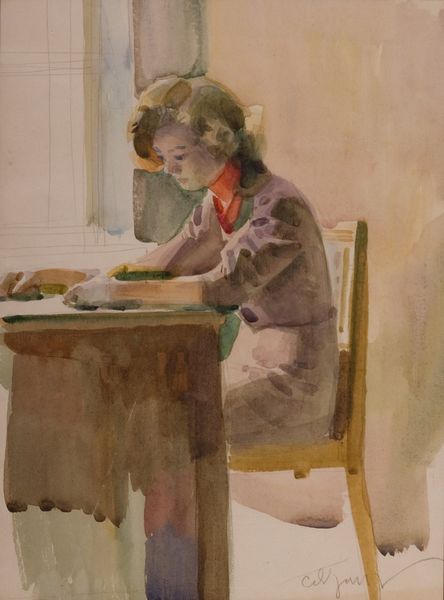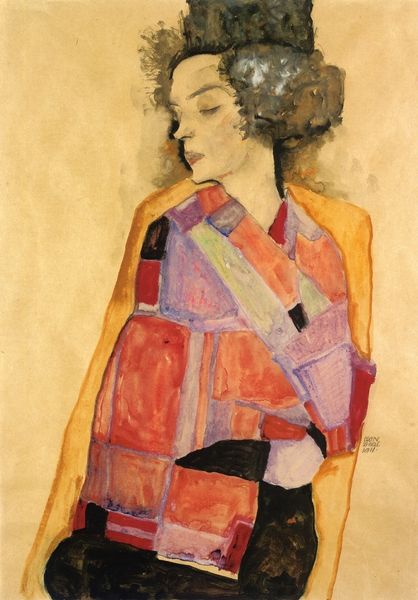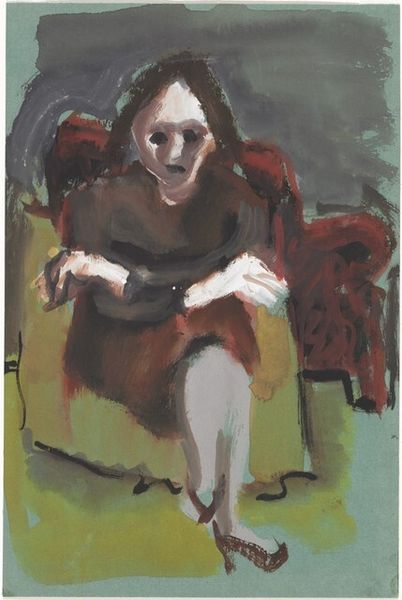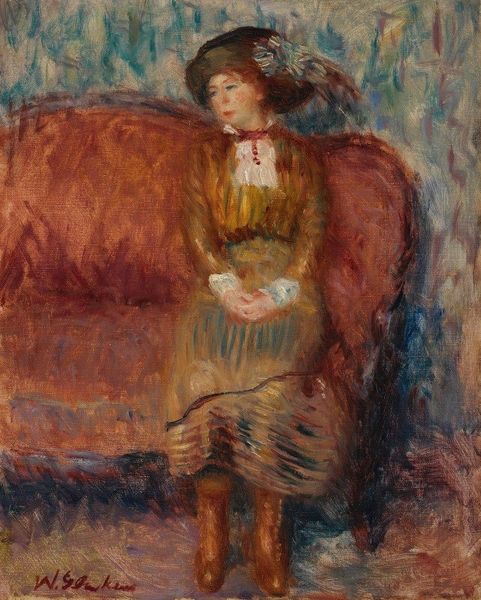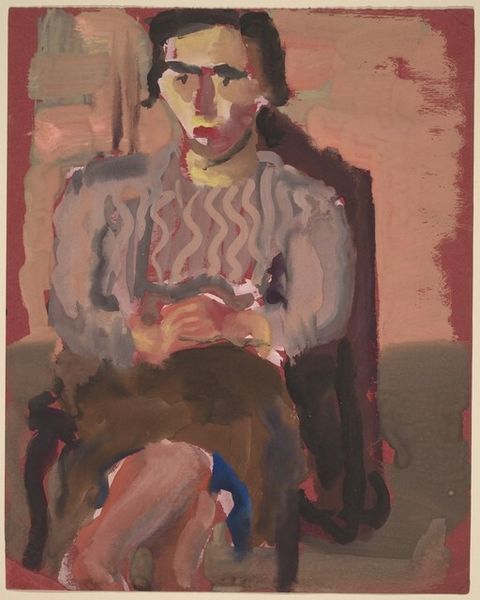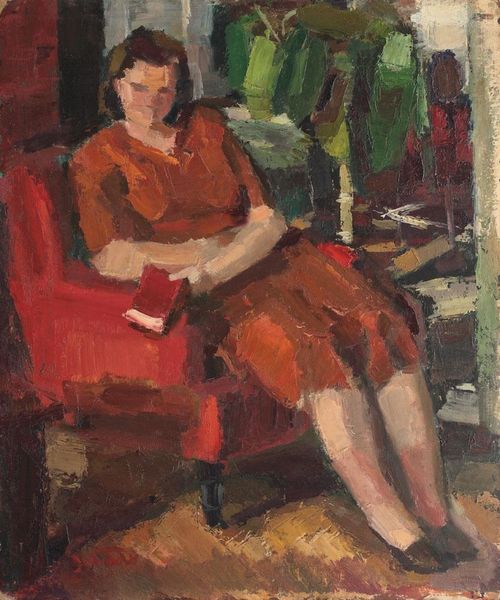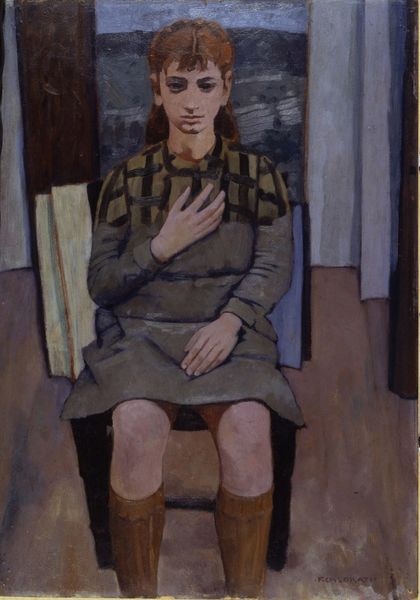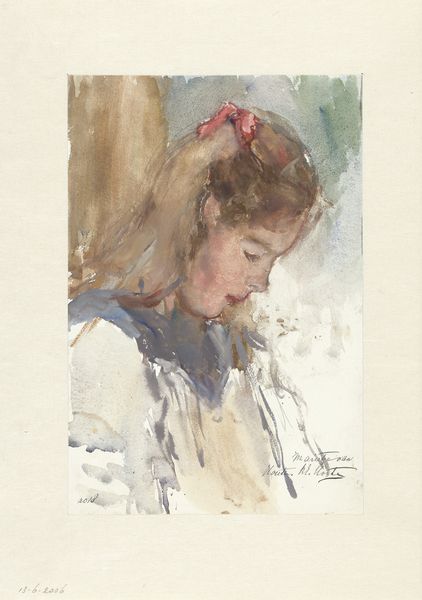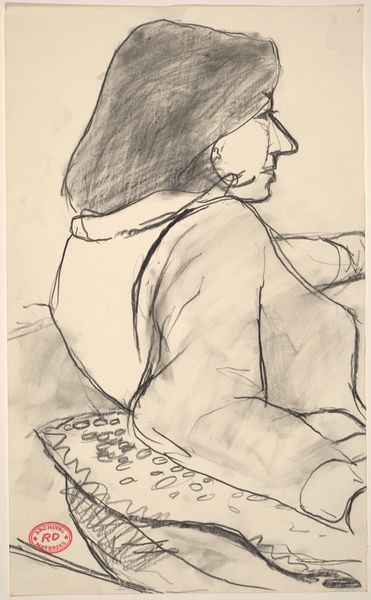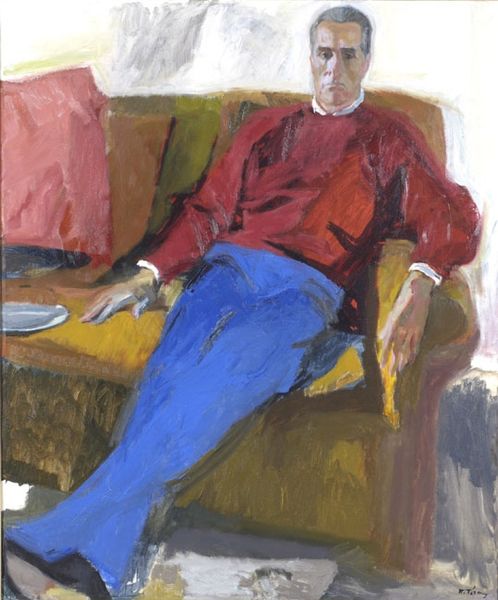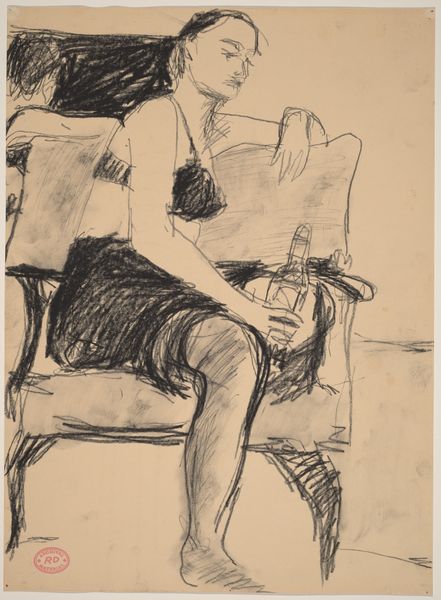
watercolor
#
portrait
#
figuration
#
watercolor
#
realism
Copyright: Sergiy Grigoriev,Fair Use
Curator: Sergiy Grigoriev’s “Portrait of a Girl” from 1963 captures a young woman in watercolor. There’s a delicacy in how Grigoriev renders her, a sort of hesitant stillness. What's your first impression? Editor: My eye is immediately drawn to the way she sits, slumped over almost, and the muted vibrancy of her cardigan. It strikes me as sad, somehow – an intimacy shrouded in vulnerability. Curator: I see the vulnerability, too. Note how her gaze averts, seeking inward. Grigoriev was a master of conveying inner psychological states. The girl is portrayed in simple garments. Her gaze suggests that she is contemplating her future as part of the next generation who have no idea what the next day will bring. It hints at larger symbolic implications within a rapidly changing world. Editor: That is compelling! Speaking materially, watercolor here is key; Grigoriev really exploits its transparency to achieve the fleeting nature of memory. Notice the sketch-like quality of the lines, allowing for a softness, an unfinished feel that resonates with adolescence itself. Also, how economical the details of the chair she's seated upon are treated – really pushing us towards considering only her. Curator: The chair does act as a staging point, a place in time she is occupying. Considering this work came out in the early 60s, there are cultural echoes. She could be anyone. This universality resonates powerfully, transcending her individual likeness. Editor: And watercolor, especially in a society focused on manufacturing after the Second World War, speaks to a democratizing artistic production—affordable materials inviting diverse creators to the arena. I agree; Grigoriev invites empathy here, and in so doing perhaps inadvertently, asks viewers of all economic status to acknowledge how art is an intimate encounter that invites compassion, especially since the process itself—from sitting to being seen, made so vulnerable by medium, composition, and affect, allows both maker and viewers to have a different exchange than other mediums permit. Curator: That focus on the act of seeing shifts our understanding – allowing us to truly ‘see’ her internal world. Editor: Yes! Thinking through material means creates such profound insights that the historical contexts add another enriching layer to understanding human-object relations. Thank you!
Comments
No comments
Be the first to comment and join the conversation on the ultimate creative platform.
